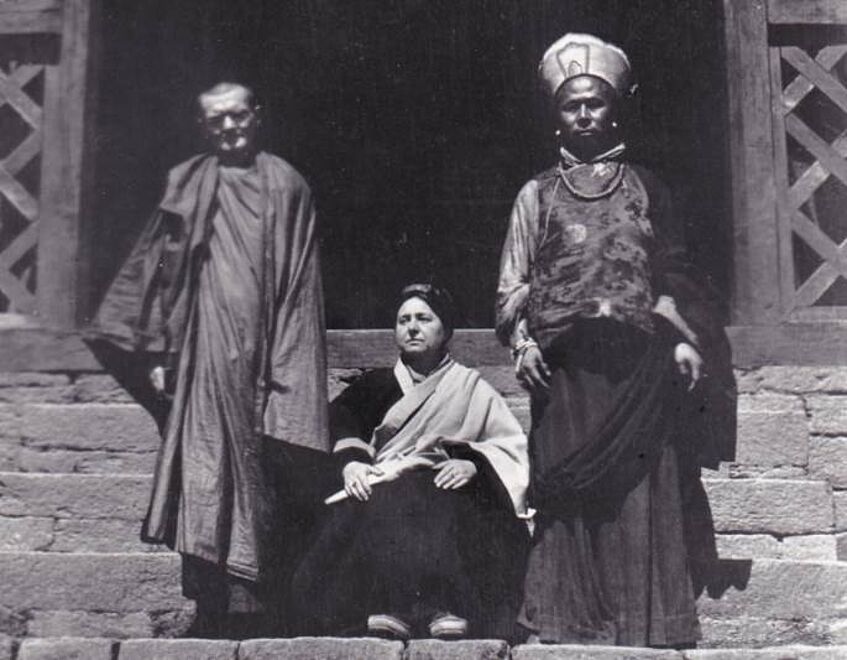Yogic Icons in the Making: Alexandra David-Neel in India and Tibet and Yoga and Meditation in France and Europe (1890–1960)

Yoga is very popular and practised all over the world encompassing many different meanings and currents. Recent studies have shown how its development has taken place since the 1930s, and especially since the 1960s, in a dynamic interaction between India, and more generally Asia, Europe, and the Americas. The process began as early as the end of the 19th century, at the crossroads of esoteric, scholarly, literary, and artistic circles. While a few works have focused on the conception of yoga in English-speaking theosophical circles, the role of French occultist circles in the cultural history of global yoga remains insufficiently studied.
Thought of first and foremost as a practice, yoga has also been scarcely studied from the angle of the figures who embody it, the yogis and yoginis, who have played a key role in shaping the imagery surrounding India and Tibet. The transfer of yoga imagery from India to Tibet in the global context deserves particular attention. The works of the French Buddhist traveller and writer Alexandra David-Neel (1868–1969) shed light on this lesser-known history of yoga.
David-Neel’s work on yoga goes back to her very first writings in the late 19th century, within the theosophical and scholarly circles of the time, and continues right up to her very last writings at the end of her life in the 1960s. Above all, her books on Tibet, starting in the late 1920s, helped popularise Tibetan yogis and yoginis. This literary output allows for an examination of nearly a century of yoga development in France and and French-speaking areas of Switzerland and Belgium within the global context, and is key to understanding the emergence and creation of "yogic icons."
In addition, after publishing several texts on Indian yoga and Tibet, David-Neel embarked on a research trip to Asia, largely focusing on modern yoga developments. Through archival documents, her journey and sudden interest in Tibetan yoga can be traced, revealing the Asian figures involved in translating yoga within an imperialist context and highlighting the entangled historical issues that underpin David-Neel’s writings.
In parallel, David-Neel was deeply involved in Buddhist meditation and wrote extensively on the subject. Yoga repeatedly occurs in this context and is often posited in opposition to meditation. David-Neel’s conceptions of and approaches to yoga and meditation, as expressed in her writings and interviews, needs to be understood against the backdrop of the vast network she maintained and developed with numerous personalities, in France, Europe, America, and Asia who were involved in the development of the study and practice of what came to be known as "Asian spiritualities."
In these multiple contexts, David-Neel’s position as a committed Buddhist sheds new light on the relationship between yoga and meditation, and on the intertwined history of these two notions in 19th- and 20th-century global religious history, which have shaped our understanding today.
